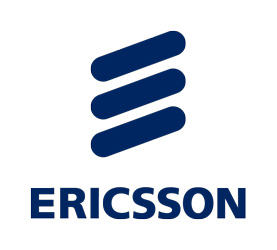Ericsson deltar i "World Radiocommunication Conference 2015 (WRC-15)" i Geneve, Schweiz som pågår till och med den November 27. Den ökade efterfrågan för radio spectrum kommer att behandlas - en efterfrågan som måste tillgodoses om vårt nätverkssamhälle ska uppnå sin fulla potential.
Läs hela pressmeddelandet på engelska nedan, eller på spanska här.
Executives from Ericsson are participating in the World Radiocommunication Conference 2015 (WRC-15) in Geneva, Switzerland, which runs until November 27.
Organized by the International Telecommunication Union (ITU), the conference will conclude eight years of work carried out in the ITU by a broad range of actors in the mobile industry. The growing demand for radio spectrum will be addressed – a demand that must be satisfied if the full potential of the Networked Society is to be realized.
Part of the electromagnetic spectrum (from 1Hz to 3,000GHz), the radio frequency spectrum is essential to almost all forms of modern communications, with different parts of the spectrum allocated to a diverse range of radio technologies and applications.
As the number of devices and applications increases, the spectrum slots become more and more crowded. This presents the industry with opportunities, but also with several issues that need to be addressed.
The Ericsson team is headed up by Lasse Wieweg, Director, Government & Industry Relations, Håkan Ohlsén, Director, Spectrum and Radio Technology Strategy, and Sverker Magnusson, Director, Spectrum Standardization. The team is on hand at the event to explain the changes anticipated in society and the resultant increased demand for radio frequency spectrum.
Wieweg has stressed the importance of the event and the potential impact on spectrum needs. “All radio-based services are indeed important,” he says. “However, society is continuously changing, and the success of mobile broadband has proven to be unmatched in terms of consumer demand and penetration. “The terrestrial cellular services are also clearly empowering people and enriching their lives, stimulating progress for citizens in villages and cities in all countries of the world.”
Ohlsén says: “At WRC-15, we have two tasks that are equally important: we need to secure spectrum for the development of mobile communications for all by the year 2020 and beyond; and at the same time, we need to ensure that we can start appropriate spectrum studies for 5G systems, enabling the next step towards a Networked Society.”
The most important goal of WRC-15 is to allocate sufficient additional spectrum for about 9.2 billion mobile subscriptions by 2020. Magnusson explains: “Access to sufficient spectrum is of paramount importance in terms of providing affordable mobile broadband and meeting the tremendous growth in mobile data traffic. “The timely availability of spectrum for both coverage and capacity depends on success at WRC-15".
“In other words, this is about satisfying the coverage needs in both under-served and metropolitan areas, as well as bridging the digital divides between regions and people. The conference will also cover the service needs of indoor and outdoor users, and the importance of fulfilling all national broadband plans.” There are many benefits to be gained from finding solutions to the issues faced with regard to radio spectrum – for both individuals and society at large.
A recent report by Plum Consulting has indicated that early access to spectrum for mobile broadband in the so-called “C-Band” is feasible, and is likely to deliver significant economic benefits to many countries. Commissioned by Ericsson, Huawei and Qualcomm, the study demonstrates that spectrum sharing between mobile broadband and current uses such as satellite services could enable larger capacity for networks and higher download speeds.
The need for increased spectrum is emphasized by the rise in broadband subscriptions as well as the growth of data traffic, as indicated by the latest edition of the Ericsson Mobility Report.
One of the leading analyses of data traffic, the latest report reveals that mobile broadband subscriptions surpassed the 3 billion mark in the second quarter of 2015. A 55 percent growth in data traffic year-on-year was also recorded during that quarter.
Some of the key figures in the Ericsson Mobility Report that have a direct impact on radio spectrum are as follows:
- Q2 2015: the global total of mobile subscriptions is around 7.2 billion, excluding machine-to-machine (M2M) subscriptions. The number of subscribers is around 4.9 billion. Ericsson predicts 9.2 billion subscriptions by 2020.
- Over three billion broadband subscriptions at the end of Q2 2015 (3G/4G).
- Around 740 million LTE subscriptions in Q2 2015, with 3.7 billion expected by 2020.
The WRC is held every three or four years, and Wieweg says the 2015 event could be the most significant yet. A total of 3,800 delegates from 162 countries and 136 organizations are attending the conference.
“The ever-increasing need for mobile broadband connectivity required by the Networked Society of the future is now in the hands of the delegates now aiming to reach consensus in Geneva this month,” he says.



